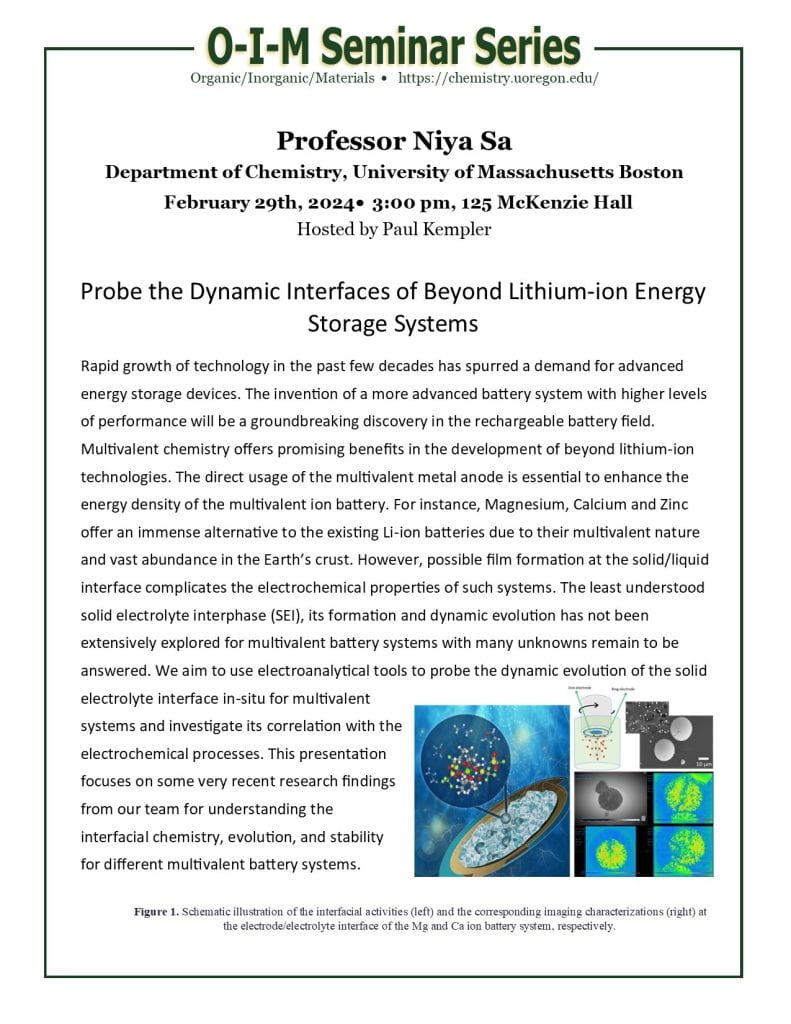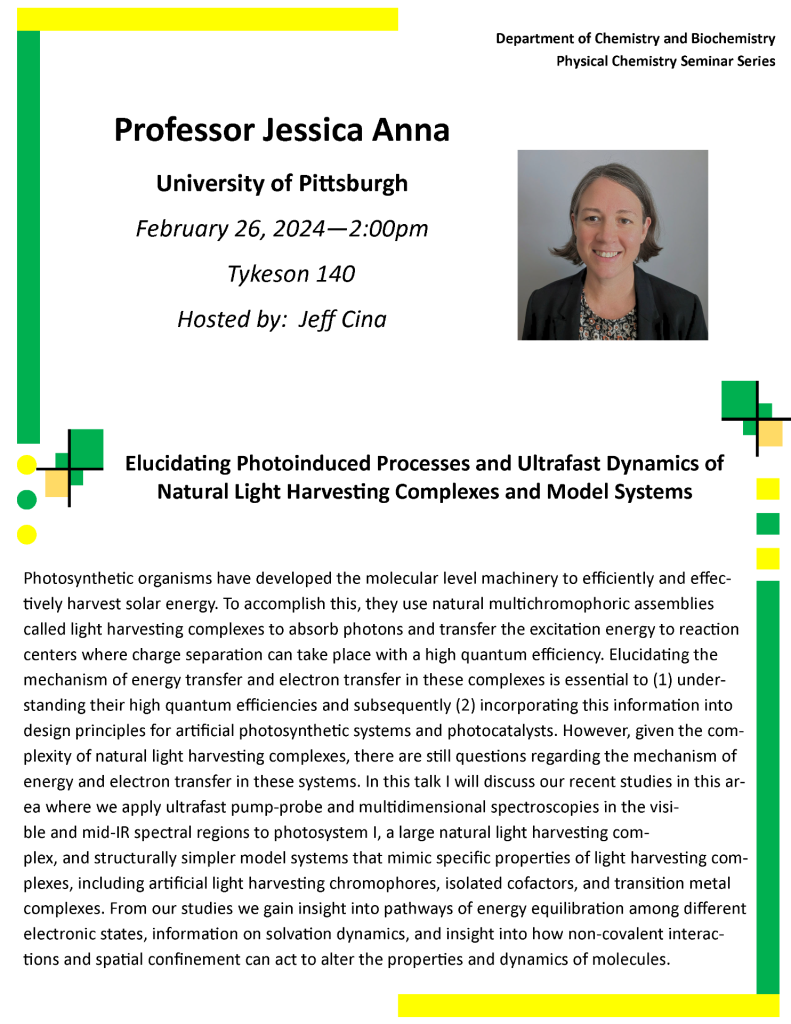
Department of Chemistry and Biochemistry
Organic/Inorganic/Materials Seminar Series
Professor Niya Sa, University of Massachusetts
February 29th ~ 3:00 pm, 125 McKenzie Hall
Hosted by Paul Kempler
Probe the Dynamic Interfaces of Beyond Lithium-ion Energy Storage Systems
Rapid growth of technology in the past few decades has spurred a demand for advanced energy storage devices. The invention of a more advanced battery system with higher levels of performance will be a groundbreaking discovery in the rechargeable battery field. Multivalent chemistry offers promising benefits in the development of beyond lithium-ion technologies. The direct usage of the multivalent metal anode is essential to enhance the energy density of the multivalent ion battery. For instance, Magnesium, Calcium and Zinc offer an immense alternative to the existing Li-ion batteries due to their multivalent nature and vast abundance in the Earth’s crust. However, possible film formation at the solid/liquid interface complicates the electrochemical properties of such systems. The least understood solid electrolyte interphase (SEI), its formation and dynamic evolution has not been extensively explored for multivalent battery systems with many unknowns remain to be answered. We aim to use electroanalytical tools to probe the dynamic evolution of the solid electrolyte interface in-situ for multivalent systems and investigate its correlation with the electrochemical processes. This presentation focuses on some very recent research findings from our team for understanding the interfacial chemistry, evolution, and stability for different multivalent battery systems.


 Department of Chemistry and Biochemistry
Department of Chemistry and Biochemistry